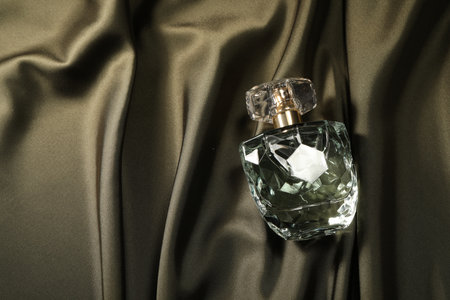Introduction to Unisex Fragrances
If you’ve ever wandered through a British department store or strolled past the fragrance counters in Selfridges, you’ve likely noticed a growing trend: unisex fragrances. But what exactly defines a unisex fragrance, and why has the UK, with its unique blend of tradition and modernity, been so open to these scents in recent decades? At its core, a unisex fragrance is crafted to appeal to all genders, sidestepping the traditional “for him” and “for her” labels that have dominated the industry for generations. In Britain, where individuality and self-expression are highly prized—think punk rock’s defiance or London Fashion Week’s fearless creativity—unisex scents fit right in. They’re about personal choice rather than prescribed gender norms, allowing each wearer to define their own aromatic signature. The UK’s multicultural landscape also plays a role; London especially is a melting pot of influences, making it fertile ground for fragrances that don’t stick to one olfactory script. Over the last few decades, as conversations around gender fluidity and inclusivity gained momentum, British consumers started leaning into scents that break boundaries. It’s not just about smelling good—it’s about expressing who you are without compromise.
2. Early Roots: From Victorian Times to the Swinging Sixties
British attitudes towards scent and gender have a fascinating history, especially from the Victorian era through to the transformative 1960s. During Victorian times, societal norms were rigid, with clear distinctions between what was considered masculine and feminine. Yet, perfumes and colognes often blurred these boundaries. Classic colognes, featuring notes of citrus, lavender, and herbs, were popular among both men and women. Similarly, floral waters such as rose and violet were not strictly reserved for ladies; gentlemen would frequently use them as refreshing tonics or aftershaves.
Fragrance Use in Historic Britain
| Period | Common Scents | Who Used Them? |
|---|---|---|
| Victorian Era | Citrus, Lavender, Rosewater | Men & Women |
| Edwardian Era | Sandalwood, Violet, Bergamot | Mainly Women (but some Men) |
| Swinging Sixties | Musk, Patchouli, Chypre blends | Unisex (breaking old norms) |
Scent and Social Identity
The way fragrances were used went beyond simple grooming—scents became a subtle form of self-expression that transcended gender stereotypes. In posh London circles or even in rural shires, a well-chosen scent was seen as a mark of sophistication, regardless of whether it leaned floral or woody. By the time the “Swinging Sixties” rolled around, youth culture began challenging old-fashioned ideas about masculinity and femininity. The unisex fragrance trend started to take root: think of iconic boutiques on Carnaby Street selling colognes that appealed to all genders. This period set the stage for today’s unisex scents that define British perfumery culture.

3. The 1990s Revolution: When Unisex Went Mainstream
The 1990s marked a seismic shift in the world of perfumery, especially here in the UK. This was the decade when unisex fragrances truly hit the mainstream, thanks to both British and international perfumers shaking up traditional gender boundaries. The cultural landscape was ripe for change; Britpop was in full swing, Cool Britannia was everywhere, and attitudes towards identity were becoming refreshingly fluid. In this climate, the rigid divide between ‘for him’ and ‘for her’ scents started to blur.
One of the most iconic releases of the era was Calvin Klein’s CK One in 1994—a fragrance that made waves on both sides of the Atlantic. Its minimalist branding and clean citrus notes felt perfectly in tune with ‘90s British fashion: think Oasis, sleek tailoring, and a move away from ostentation. Suddenly, everyone from students to style icons was spritzing on the same scent before heading out for a night at the pub or an underground gig.
British brands took note. Jo Malone London began championing simple, elegant colognes designed for layering—appealing to men and women alike who wanted something a bit more bespoke. Meanwhile, Penhaligon’s, a storied name in British perfumery, reimagined some classics with a modern twist, making them just as likely to be found on your girlfriend’s dresser as your own.
Cultural Shifts & Noteworthy Releases
| Year | Fragrance | Brand | Key Notes |
|---|---|---|---|
| 1994 | CK One | Calvin Klein | Lemon, Green Tea, Musk |
| 1995 | Lime Basil & Mandarin | Jo Malone London | Lime, Basil, Mandarin Orange |
| 1996 | Blenheim Bouquet (Revisited) | Penhaligons | Lemon, Pine, Black Pepper |
The Impact on Daily Life
This new approach wasn’t just about what you wore—it changed how Brits thought about personal style altogether. Scent became another way to express individuality rather than conform to old-school gender norms. Whether you were grabbing a quick espresso at Soho or heading out for a jog along the Thames, reaching for a unisex fragrance quickly became second nature.
4. Modern Trends: Gender Fluidity in British Fragrance
The British fragrance market today is a far cry from the rigid gender binaries of the past. With an increasing emphasis on individuality and personal expression, many British brands are embracing gender fluidity, offering scents that appeal to anyone regardless of how they identify. This move towards gender-neutral marketing not only reflects broader cultural shifts but also aligns with a new generation’s desire for authenticity.
Focus on Individuality
Modern British consumers seek fragrances that reflect their unique personalities rather than traditional notions of masculinity or femininity. Boutique perfumeries in London and across the UK now champion bespoke blends and signature scents tailored to individual tastes. This push for personalisation has led to collaborations with local artists, use of unconventional ingredients, and creative storytelling in scent design.
The Impact of Gender-Neutral Marketing
As more brands adopt inclusive messaging, shoppers are responding positively to campaigns that celebrate diversity and self-expression. The use of minimalist packaging, neutral colour palettes, and universal names further supports this shift. High street retailers and luxury houses alike are removing gendered labels from their collections, inviting everyone to explore fragrances freely.
Examples of Gender-Neutral Approaches by Leading UK Brands
| Brand | Notable Unisex Scent | Marketing Approach |
|---|---|---|
| Jo Malone London | Lime Basil & Mandarin | Signature layering concept; promotes mix-and-match without gender boundaries |
| Miller Harris | Tea Tonique | Earthy, fresh profiles; avoids masculine/feminine descriptors entirely |
| Floris London | Bergamotto di Positano | Classic heritage reimagined for all; focuses on olfactory experience over labels |
Cultural Influence and Future Directions
This openness resonates with the UK’s cosmopolitan culture, where diversity is increasingly celebrated. Fragrance houses are listening closely to younger Britons who value choice over conformity. As the line between men’s and women’s grooming continues to blur, expect even more innovative and boundary-pushing scents emerging from Britain’s perfume industry in the coming years.
5. Influential British Brands and Local Icons
When it comes to unisex fragrances, the United Kingdom boasts an impressive roster of trailblazing perfumers and heritage houses that have left a distinct mark on the industry. These brands not only reflect the nation’s appreciation for individuality but also set trends that have echoed worldwide.
Spotlight on Pioneering UK-Based Perfumers
Several British brands have embraced the concept of gender-neutral scents, blending traditional craftsmanship with modern sensibilities. Let’s take a closer look at some key players:
| Brand | Year Established | Notable Unisex Fragrances |
|---|---|---|
| Jo Malone London | 1994 | Lime Basil & Mandarin, Wood Sage & Sea Salt |
| Miller Harris | 2000 | Tea Tonique, Feuilles de Tabac |
| PENHALIGON’S | 1870 | Blenheim Bouquet, Juniper Sling |
Cult Favourites and Local Icons
The UK fragrance scene has always celebrated diversity and creativity. Jo Malone London, for example, is synonymous with layering—encouraging wearers to mix and match scents to create a personalised blend that defies gender categories. Miller Harris, with its artistic approach and unique ingredient pairings, appeals to those seeking understated elegance. Meanwhile, heritage brand Penhaligon’s has reinvented classics with a contemporary twist, making timeless scents like Blenheim Bouquet popular among both men and women.
Homegrown Artisans Shaping the Future
The British Isles are also home to a new generation of indie perfumers who challenge conventions. From East London ateliers crafting small-batch releases to Scottish makers drawing inspiration from wild landscapes, these artisans keep the unisex fragrance movement vibrant and ever-evolving.
All in all, whether you’re after something quintessentially British or daringly avant-garde, the UK offers a diverse olfactory playground where everyone can find their signature scent—no matter how they identify.
6. The Day-to-Day: Unisex Fragrances in British Life
Across the UK, unisex fragrances have seamlessly woven themselves into the fabric of everyday life, reflecting not just a trend but an evolving cultural mindset. For many Brits, fragrance is as essential as a good cup of tea or their morning skincare routine—something that sets the tone for the day and speaks volumes without saying a word.
Daily Rituals and the British Approach
Whether it’s a brisk spritz before heading out to the office, a quick top-up before meeting mates at the pub, or a calming scent for winding down after a long day, unisex scents fit naturally into British routines. The practicality and versatility appeal to the no-nonsense British sensibility; fragrances that work from gym session to dinner date are highly prized.
High Street vs. Niche: Where Do Brits Shop?
From bustling high streets to tucked-away indie boutiques, options abound for every taste and budget. Here’s a quick look at how Brits source their favourite unisex scents:
| Where | What Youll Find | Typical Brands |
|---|---|---|
| High Street Shops | Accessible classics and trending launches | ZARA, Jo Malone London (Cologne Collection), The Body Shop |
| Niche Boutiques | Unique blends and artisan creations | PENHALIGONS, Laboratory Perfumes, Miller Harris |
| Online Retailers | Exclusive releases, international finds | Cult Beauty, Liberty London, Escentual |
The Social Side of Scent Sharing
It’s not uncommon for couples or flatmates to share a bottle of fragrance—practical, economical, and often quite fun. This communal approach fits with the easy-going British attitude towards beauty and self-care: why not share what works? Plus, unisex fragrances make gift-giving simple—no more fretting over “his” or “hers.”
The result is a uniquely British blend of tradition and modernity; whether you’re donning an iconic Burberry trench or your go-to trainers, there’s always room for a spritz of something fresh and universally appealing. In this way, unisex fragrances have become as much a part of daily life as the ritualistic morning brew.
7. Looking Ahead: The Future of Unisex Fragrance in the UK
The evolution of unisex fragrances in the UK has been nothing short of remarkable, but what does the future hold as British perfumery continues to push boundaries? As we look forward, there are several clear trends shaping the next chapter for gender-neutral scents across the nation.
Innovation on the Horizon
British fragrance houses have always had a knack for embracing bold ideas, and with new technologies and creative collaborations, were likely to see even more experimental notes and unexpected ingredient pairings. Scent designers are exploring everything from molecular perfumes to AI-assisted blending, aiming to deliver unique olfactory experiences that speak to modern tastes—whether you’re strolling through Shoreditch or heading out in Glasgow.
Sustainability: A Growing Priority
Eco-consciousness is front and centre in British consumer culture. Expect future unisex fragrances to place greater emphasis on sustainable sourcing, biodegradable packaging, and carbon-neutral production. Brands will continue innovating to reduce their environmental footprint while maintaining that quintessentially British sense of style.
Focus Area |
What to Expect |
|---|---|
Ingredients |
Locally sourced botanicals, upcycled materials, and cruelty-free formulations |
Packing |
Refillable bottles, recycled glass, minimalist design aesthetics |
Production |
Carbon-neutral factories, green energy initiatives |
Inclusivity: Breaking Down Barriers
The UKs reputation for diversity and openness means unisex fragrances will only become more inclusive. Look out for brands collaborating with underrepresented communities, celebrating British subcultures, and offering customisation options that allow everyone—from students in Manchester to professionals in London—to find a scent that feels uniquely theirs.
Where Might We Go Next?
If history has taught us anything, it’s that British perfumery thrives on reinvention. From small-batch indie brands to high-street staples, the coming years promise scents that not only transcend gender but also reflect Britain’s commitment to innovation, sustainability, and inclusivity—a fragrant future worth looking forward to.


